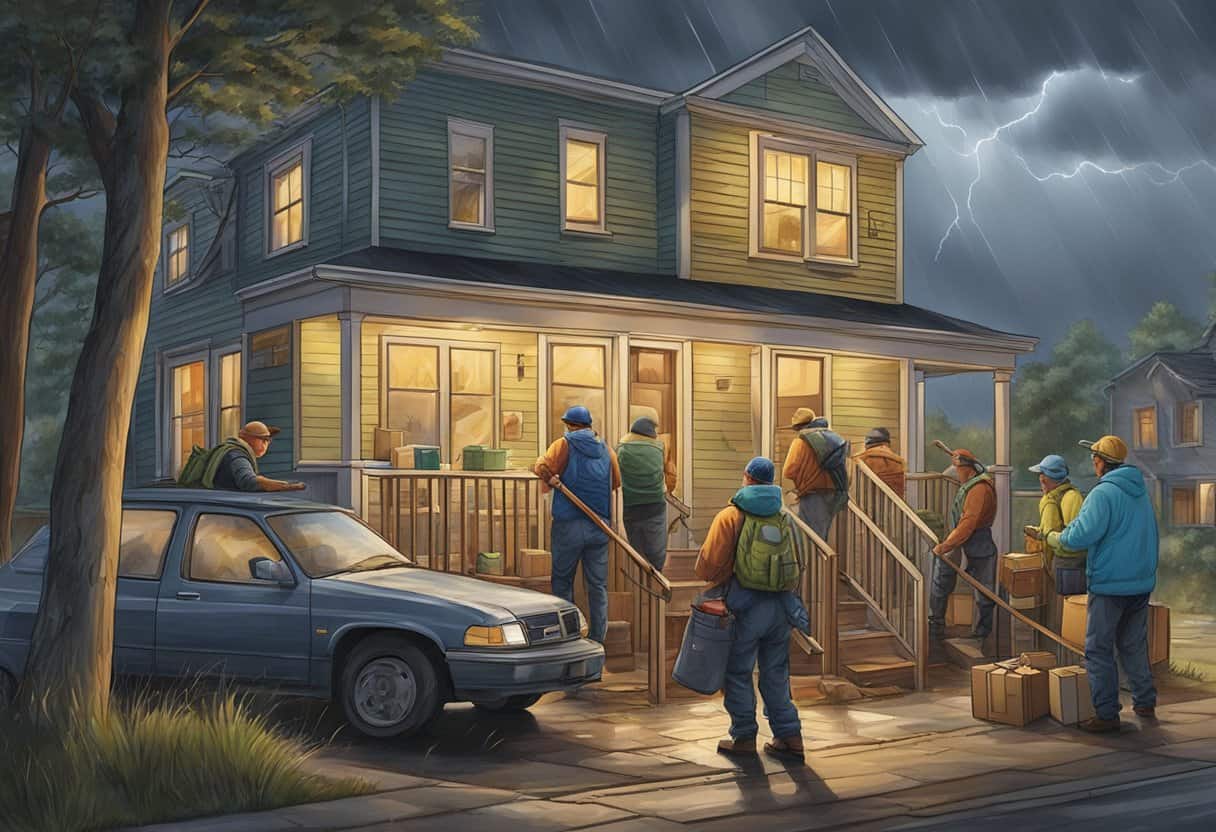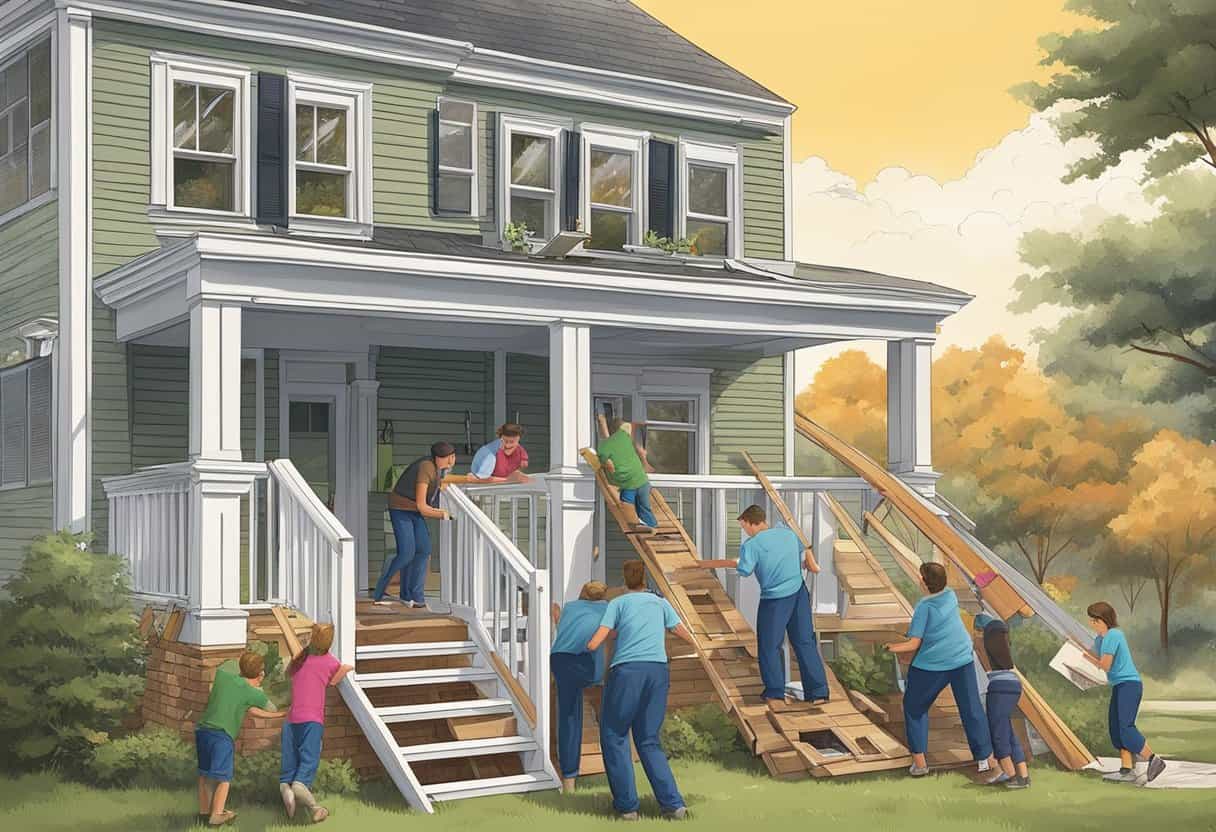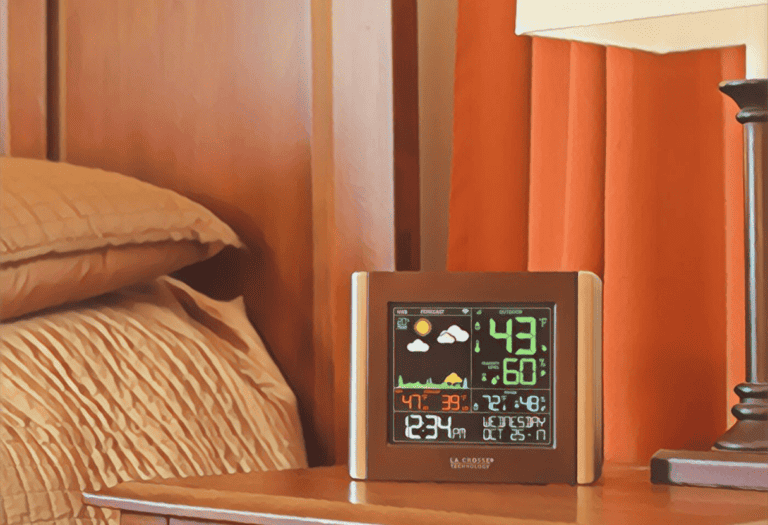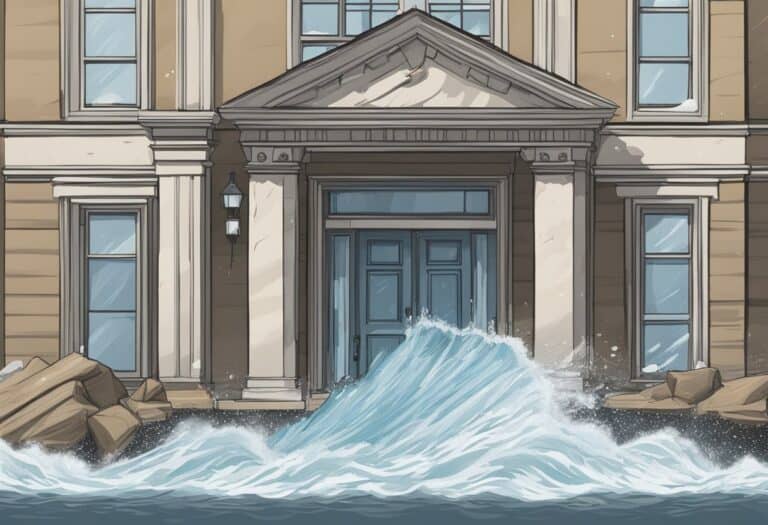Hurricane season brings with it the formidable task of preparation. It is essential for those residing in hurricane-prone regions to understand the nature of hurricanes and the profound impact they can have on communities.
Preparation strategies, which include securing property, assembling emergency kits, and formulating evacuation plans, are crucial steps you can take to mitigate the risks associated with these powerful storms. By staying informed and ready, you better protect yourself, your loved ones, and your property from the potential devastation.
Being prepared for a hurricane is more than just boarding up windows. It involves a comprehensive understanding of evacuation procedures, staying safe during the storm, and knowing what actions to take in its aftermath. Your health and safety remain a top priority throughout each phase of a hurricane, from the initial warnings to the recovery period.
Familiarizing yourself with frequently asked questions about hurricane preparedness can empower you to make informed decisions in the face of such natural disasters.
During hurricane season, comprehensive preparation is vital for safeguarding lives and property. Key measures include understanding hurricanes, assembling emergency kits, securing homes, and formulating evacuation plans. Post-storm, assess damages cautiously and initiate recovery while prioritizing health and safety.
Understanding Hurricanes
When you prepare for hurricane season, it’s crucial to understand what you’re up against. Knowledge of hurricane characteristics and the timing of the Atlantic hurricane season helps you plan effectively and reduce potential impacts.
Characteristics of Hurricanes
Hurricanes are powerful tropical storms that form over warm ocean waters. They are categorized by sustained high winds of 74 miles per hour (mph) or higher. The structure of a hurricane includes a low-pressure center known as the eye, surrounded by a wall of clouds with intense winds and rains. As hurricanes move onto land, they can bring storm surge, heavy rainfall, and sometimes spawn tornadoes. A hurricane’s intensity is measured on the Saffir-Simpson Hurricane Wind Scale, ranging from Category 1 (least severe, with winds between 74-95 mph) to Category 5 (most severe, with winds over 157 mph).
The Atlantic Hurricane Season
The Atlantic hurricane season officially runs from June 1st to November 30th. The season peaks from August to October, when ocean temperatures are at their warmest. During this period, conditions are ideal for hurricanes to form. It’s common for the Atlantic to experience 12 named storms annually, with at least half of them developing into hurricanes. Planning for the hurricane season involves keeping a close eye on weather reports, understanding evacuation routes, and knowing the difference between a hurricane watch and a warning.
Preparation Strategies
Proper preparation can greatly reduce the impact of a hurricane on both property and personal safety. Focusing on clear and practical measures, this section guides you through the crucial steps of hurricane preparedness.
Developing an Emergency Plan
Every household should have a detailed emergency plan ready. Yours should include evacuation routes, local shelters, and a communication strategy for staying in contact with family members. Ensure all members of your household are familiar with this plan, and practice it regularly. For insights into integrating hurricane and other disturbance plans, review the strategies and practices discussed in recent studies.
Emergency Supply Kit Essentials
Your emergency kit is your lifeline during a hurricane. It should include:
- Non-perishable emergency food: canned goods, energy bars, and dry mixes.
- Water: one gallon per person per day, for at least three days.
- Medical supplies: a first aid kit, prescription medications, glasses.
- Power sources: flashlights, a battery-powered or hand-crank radio, and extra batteries.
- Personal items: personal hygiene products, clothing, and blankets.
Consider the precautionary actions recommended for business preparedness, which are also applicable to personal emergency kits.
Securing Your Home
To protect your home, reinforce its structure:
- Install storm shutters or board up windows to prevent breakage.
- Clear loose and clogged rain gutters and downspouts to avoid flooding.
- Secure outdoor objects or bring them inside.
- Consider investing in a generator for power outages.
Insurance and Important Documents
Maintain updated insurance policies, ensuring they cover hurricane damage. Keep a record of your belongings and store all important documents in a secure and waterproof container. Make digital copies if possible. If you have concerns about future preparedness, refer to vulnerable populations’ preparedness plans for guidance.
Evacuation Procedures

When a hurricane approaches, knowing the specifics of evacuation procedures can save lives. Early preparation ensures you can leave quickly and safely if an evacuation order is issued for your area.
Knowing Your Evacuation Zone
Identify your evacuation zone by checking with local authorities or visiting emergency management websites. These zones are predetermined based on the risk of flooding and the storm’s intensity. It is essential to follow directives if you are in an area marked for evacuation.
Evacuation Orders and Timing
Stay informed about evacuation orders through local news, emergency alerts, and official communications. Adhere strictly to these orders, as they specify the timing and urgency of the evacuation. Delaying departure can lead to increased risk and fewer transportation options.
Evacuation Routes and Shelters
Plan your evacuation route in advance using information provided by local emergency planning officials. Locate your nearest storm shelter location and plan multiple routes in case your primary path is compromised. Keep a list of emergency phone numbers and addresses for shelters handy.
Special Considerations for Pets and Special Needs
Ensure to include pets in your emergency plan, as not all shelters may be pet-friendly. For those with special needs, register with your local emergency assistance program to receive additional support during an evacuation. Maintain an updated emergency contact list and a special needs supply kit.
During the Hurricane
When a hurricane strikes, your safety depends on staying informed, securing your shelter, and knowing how to manage the absence of utilities. Below are actionable steps to take during the event.
Staying Informed
Keep a close eye on the latest hurricane watches and alerts from reliable sources like the National Weather Service. Ensure your devices are charged and have a battery-powered radio handy to receive live updates.
- Check for updates frequently, as the hurricane’s path and strength can change rapidly.
- Keep key information sources, such as the National Weather Service, bookmarked on your devices.
Sheltering in Place
Find a secure space within your home to shelter in place, ideally an interior room without windows.
- Gather supplies in your designated shelter area: non-perishable food, water, flashlights, and a first aid kit.
- Consider reinforcing windows and doors if you haven’t already done so before the storm.
Handling Power Outages
Be prepared for power outages by having alternative sources of light and a generator, if possible.
- Never use a generator inside your home or garage; place it outside and away from windows to prevent carbon monoxide poisoning.
- Unplug electrical equipment to protect them from power surges when power returns.
Remember to follow guidance issued by authorities, such as CDC Hurrinaes guidelines, and prioritize your and your family’s safety above all else.
Aftermath and Recovery
After the winds have calmed and the storm has passed, it’s critical to approach recovery efforts with a systematic and informed strategy, ensuring your safety and the efficient restoration of your property.
Assessing and Documenting Property Damage
First, ensure that you are safe to re-enter your home or property. If you encounter standing floodwaters, be cautious as they may pose various risks, including structural damage or electrical hazards. Once inside, document all property damage before beginning the clean-up process. This step is important for insurance claims and possible assistance from government programs. Take photographs or videos, and make a comprehensive list of damaged items.
Clean Up and Disposal
Begin clean up by wearing protective gear such as gloves and masks to avoid health risks. Remove water and mud from your property as soon as possible to mitigate the effects of flooding and prevent mold growth. Sort damaged properties into categories, separating salvageable items from those that require disposal. For guidance on hazardous waste disposal, consult local authorities to adhere to safety regulations.
Accessing Additional Resources
After assessing property damage and starting the clean-up process, explore additional resources available to aid in recovery. These may include federal assistance programs, insurance coverage information, or community aid for those affected by the storm. Don’t hesitate to reach out to local disaster relief services for support and information on how to navigate the period after the storm to help you in the recovery process.
Safety and Health Considerations
When preparing for a hurricane, it’s crucial to prioritize your safety and health by avoiding the immediate dangers presented by floodwaters and ensuring you have strategies to maintain your mental well-being throughout the ordeal.
Avoiding Health Hazards
Floodwaters can be deceptively dangerous. Even shallow standing water can harbor infectious diseases and toxic substances. You should avoid contact with floodwaters whenever possible and use protective gear, such as waterproof boots and gloves, if you must navigate through them. Stay updated on CDC hurricanes guidelines for the latest safety advice, including proper handwashing and disinfection practices.
Be aware that trees weakened by heavy winds may collapse, posing a risk to life and property. Ensure your roof is inspected and reinforced if necessary, especially if you live in a trailer or a home that might not withstand the severe forces of a hurricane. Learn CPR and basic first aid in case of emergencies where professional medical help is delayed.
Mental Health and Coping with Disasters
The psychological impact of a hurricane can be just as devastating as the physical one. You should establish a support system with friends and family to maintain your mental health. It’s normal to feel stressed or anxious during such events, and having someone to talk to can make a significant difference.
Maintain a routine to the best of your ability, as a semblance of normalcy can provide comfort. Limit exposure to constant media coverage of the disaster, as it can increase anxiety. If needed, seek professional help to cope with severe stress or trauma. Remember, looking after your mental health is a sign of strength, not weakness.
Frequently Asked Questions
This section answers common queries related to hurricane preparedness and the essential strategies to protect yourself and your property.
What essentials should be included in a hurricane preparedness kit?
Your hurricane preparedness kit should contain a first aid kit, medications, flashlight with extra batteries, a multi-tool, personal hygiene items, and copies of important documents. It’s also advised to include battery-operated radios for updates.
How can one secure their home to minimize damage from a hurricane?
Secure windows with storm shutters or plywood, reinforce garage doors, and tie down the roof to the frame structure. Clearing your yard of loose material and trimming trees can minimize debris that hurricanes might turn into projectiles.
What food and water supplies are necessary to maintain during a hurricane?
Maintain a supply of non-perishable food items like canned goods and dry mixes, and have at least one gallon of water per person per day for at least three days for drinking and sanitation.
What are the critical steps to ensure personal safety during a hurricane?
Stay indoors, away from windows and doors, and monitor weather updates. Have a secure room stocked with essentials and know the signs of a tornado, which can accompany hurricanes.
How should one develop an evacuation or communication plan for hurricane emergencies?
Identify evacuation routes and local shelters. Designate an out-of-state contact for all family members to connect with, and ensure everyone is informed about the evacuation plan, especially children.
What post-hurricane safety tips should be followed to deal with potential dangers after the storm passes?
Stay updated on the situation through local news and avoid driving until it’s safe. Beware of water-damaged structures, downed power lines, and contaminated water. After the storm, use caution during cleanup efforts as injuries can occur.







